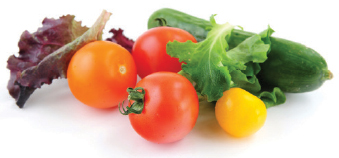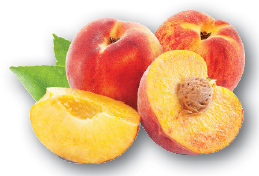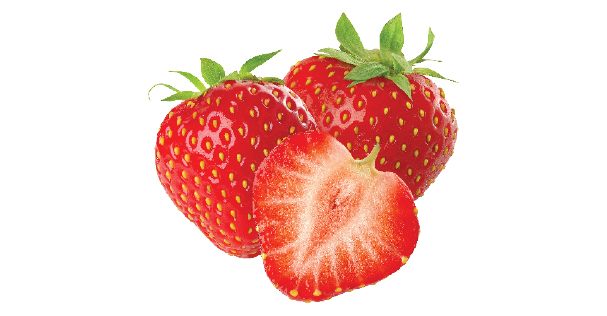By Kathleen Zelman, M.P.H., R.D., Environmental Nutrition Newsletter
When you recall of eating a delicious. juicy peach or near-perfect ear of sweet corn, summertime comes to mind. The thought of crisp apples or the perfect plump pumpkin triggers images of fall. Asparagus, lettuce and radishes fresh from the garden make you think of spring.
Eating a diet rich in fruits and vegetables is the foundation of a healthy diet. Low in calories and loaded with fiber, vitamins, minerals and antioxidants, fresh produce is always a good choice – especially when it comes from your own community and eaten while it’s in season.
Of course, seasonality depends on where you live. While many fruits and vegetables are confined to specific seasons – berries and melons in the summer and winter squashes and pears in the fall – availability may vary depending on your location.
“In California, where the vast majority of domestic produce comes from, crops like strawberries are harvested year round, but elsewhere the harvest may only last 4-6 weeks,” says Amy Myrdal Miller, M.S., R.D.N., dietician and owner of Farmer’s Daughter Consulting.
Some fruit trees, like peach and cherry, bear fruit only once a year, whereas you can plant and harvest multiple lettuce crops in a single season. And if the climate is milder, you have longer growing seasons.
Benefits of Seasonal Eating
 “Eating seasonally gives you something to look forward to each season,” says culinary nutritionist Jackie Newgent, RD.
“Eating seasonally gives you something to look forward to each season,” says culinary nutritionist Jackie Newgent, RD.
Fruits and vegetables sold locally at farmers’ markets and co-ops are picked at the peak of ripeness, and thus are more delicious, as well as richer in nutrients, compared to produce picked green to sustain long-distance shipping, she says.
And the benefits extend to the environment. You can reduce your carbon footprint when you buy locally produced fruits and vegetables in season, which don’t need to be transported for long distances.
“Eating seasonally reduces greenhouse gases because the produce does not need to make a gas-guzzling trip,” says Newgent.
Off-Season Produce
The quality of some produce, like tomatoes or peaches, in peak season simply can’t be compared to flavorless produce that is picked green and shipped long distances.
“We have an intense appreciation for ‘fresh’ in this country, often forgetting that other forms of produce are also healthful, flavorful and convenient,” says Miller. Freezing, canning and preserving is an excellent way to optimize seasonal produce year round.
When your favorite produce is not in season, it’s still important to fill at least half your plate with fruits and vegetables. They offer so many health benefits, regardless of whether you choose fresh, local, seasonal, organic, frozen, dried or canned.
Seasonal Eating Tips
 Here are some helpful insights for finding fresh produce for your plate:
Here are some helpful insights for finding fresh produce for your plate:
- Buy produce in bulk when it is at the height of its season and preserve it by freezing or canning.
- Go to a farmers’ market early in the day for the best selection.
- Build meals, such as vegetable stew, around just-harvested foods.
- Don’t be afraid to try a new fruit or vegetable, such as kale or persimmons.
- Don’t just limit your farmers market shopping to summer; take full advantage of offerings at each season.
- Use winter produce as part of recipes, such as tossing diced apple into a spicy stir-fry or layering sliced pears into a cheesy sandwich.
- Browse cookbooks, recipe blogs, and food-focused social media sites for produce inspiration.
- Don’t over-think your dishes; let the full flavors of the produce stand out.
- Simple preparations with few ingredients often work best, like sweet potato hash prepared with olive oil, onion, parsley, and served with an egg for protein.
- Plant your own seasonal produce in a garden or in a pot on a balcony.
Seasonal Produce Guide
Spring
Apricots, artichokes, Belgian endive, broccoli, cauliflower, cucumber, collard greens, corn, fava beans, honeydew melon, mango, morel mushrooms, mustard greens, okra, oranges, peapods, pineapple, radicchio, rhubarb, sorrel, spinach, strawberries, Swiss chard, Vidalia onions, watercress.
Summer
Apricots, beets, berries, boysenberries, cantaloupe, melons, cherries, cucumbers, eggplant, figs, garlic, grapefruit, grapes, green beans, green peas, kiwi fruit, lima beans, limes, nectarines, okra, peaches, pineapples, plums, radishes, raspberries, strawberries, sweet corn, summer squash, tomatillo, tomatoes, watermelon, zucchini.
Fall
Acorn squash, Asian pear, Belgian endive, broccoli, Brussels sprouts, butter lettuce, butternut squash, cauliflower, cranberries, diakon radish, endive, grapes, guava, Jerusalem artichoke, key limes, kohlrabi, kumquats, pears, persimmon, pineapple, pomegranate, pumpkin, quince, radicchio, sweet potatoes, Swiss chard, turnips.
Winter
Belgian endive, Brussels sprouts, clementines, collard greens, date plums, dates, grapefruit, kale, kiwi fruit, Mandarin oranges, oranges, pears, persimmons, red currants, sweet potatoes, tangerines, turnips.
Year-round
Apples, avocados, carrots, celery, cherry tomatoes, Chinese eggplant, leeks, lemons, lettuce, mushrooms, onions, papaya, parsnips, potatoes, rutabagas, snow peas.










